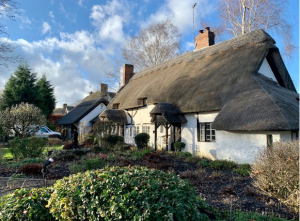Whether your existing roof has been damaged by a storm, has aged past its effectiveness, or you’re simply installing a roof on a new home, there are a lot of factors to consider in your decision. Nowadays, the eco-friendliness of that roof is a big factor for a lot of people, as well. There are a large amount of green roofing options out there, but which of them best suits your needs? Let’s look at some.
Metal Roofing
Metal roofing is one of the most sustainable options available due to its durability and energy efficiency. Metal roofs can last for 50 years or more, significantly reducing the need for replacements. They are also highly reflective, which means they can reduce cooling costs by reflecting heat away from the home. Metal roofs are often made from recycled materials and are fully recyclable at the end of their lifespan, making them an eco-friendly choice. However, the initial cost of metal roofing can be higher than other materials, and it can be noisier during rainstorms, which might be a consideration for some homeowners.
Rubber Roofing
Rubber roofing, often made from recycled tires, is another sustainable option that offers durability and flexibility. This type of roofing is resistant to extreme weather conditions, including heavy rain, snow, and high winds. Rubber roofs are also relatively low maintenance and can last up to 50 years. They provide excellent insulation, which can help reduce energy costs. However, rubber roofing can be more expensive than traditional roofing materials, and its availability might be limited depending on your location. Despite these drawbacks, rubber roofing is a good choice for those looking for a long-lasting, eco-friendly option.
Thatch Roofing
Thatch roofing is a traditional method that uses natural materials such as straw, reeds, or palm leaves. It’s one of the most sustainable roofing options because it uses renewable resources and has a low carbon footprint. Thatch roofs provide excellent insulation, keeping homes warm in the winter and cool in the summer. They also have a unique aesthetic appeal that blends well with natural surroundings. However, thatch roofing requires regular maintenance with the help of a thatched roof consultant to prevent leaks and is more susceptible to fire than other roofing materials. Additionally, it may not be suitable for all climates, particularly in areas with heavy rainfall or high humidity.
Green Roofing
Green roofing, also known as a living roof, involves covering a roof with vegetation. This sustainable option provides numerous environmental benefits, including improving air quality, reducing stormwater runoff, and providing insulation that lowers energy costs. Green roofs create habitats for wildlife and can extend the lifespan of the roof by protecting it from the elements. However, green roofing requires a strong structural foundation to support the weight of the soil and plants, and it can be expensive to install and maintain. Despite these challenges, green roofs are an excellent choice for environmentally conscious homeowners looking to reduce their ecological footprint.
There are even more options to research, each of them with their own pros and cons. Hopefully, this has helped you get an idea of what factors you need to consider as you look through them.
Note: This is a collaborative post


No Comments